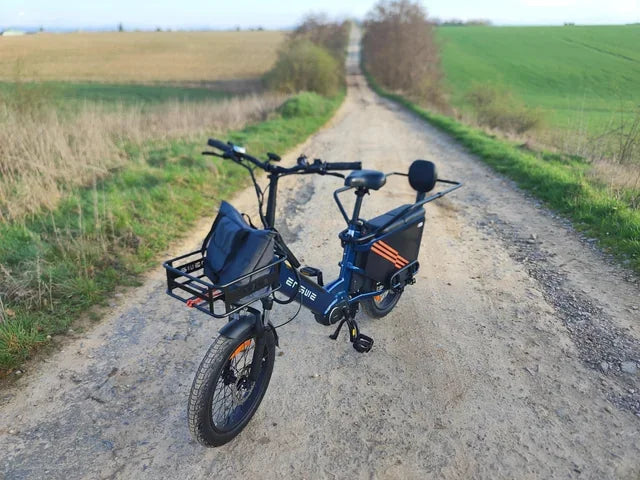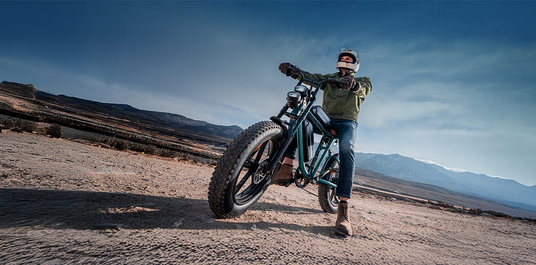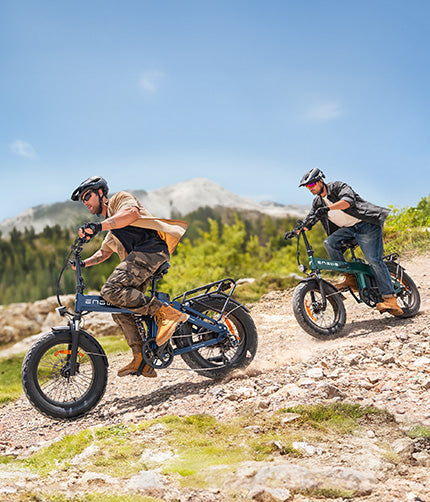Your search for the best electric road bike has begun, a journey that can feel both exciting and overwhelming. You are likely picturing yourself effortlessly cruising up hills that once challenged you, extending your weekend rides, or perhaps transforming your daily commute into the best part of your day. The market is filled with technical jargon and a dizzying array of options, but the secret isn't finding the bike with the most impressive specification sheet. It's about finding the bike that perfectly matches the reality of your riding life, a partner that doesn't just promise performance but delivers it on the roads you actually travel. This guide will cut through the noise, helping you understand what truly matters so you can invest in an electric bike that you will love to ride every single day.
Redefining the Electric Road Bike
First, let's redefine what 'road bike' means in the electric era. Traditionally, a road bike is a lightweight, drop-handlebar machine built for pure speed on smooth tarmac. While electric versions of these exist, for many UK riders, the reality of our roads—potholes, varied surfaces, and unpredictable weather—means a different kind of 'road' bike is often a much better choice. The modern electric road bike is a versatile hybrid. It retains the goal of efficient, fast travel on roads but adds elements of comfort, durability, and all-terrain capability. It's a bike for commuting on a Monday, exploring a canal towpath on a Saturday, and tackling a country lane on a Sunday. Before you go any further, ask yourself: am I a competitive cyclist looking to shave seconds off my time, or am I looking for a powerful, reliable, and comfortable machine for real-world journeys? For most people, it's the latter.
Understanding the Core Components
Understanding the core components is crucial to making an informed choice. The motor is the heart of the electric bike. In the UK, it will be legally limited to 250W of continuous power, providing assistance up to 25 km/h. More important than the power figure is how that power is delivered. This comes down to the sensor. Cheaper bikes use a cadence sensor, which turns the motor on when you start pedalling, often creating a jerky, unnatural surge. The superior technology is a torque sensor. This measures how hard you are pressing on the pedals and delivers a proportional amount of assistance. The result is a ride that feels incredibly smooth and intuitive, as if you've simply been given superhuman legs. The battery is your fuel tank. Look beyond the simple voltage and consider the Amp-hours (Ah); a higher number generally means a longer range. Also, consider practicality: is the battery removable? A removable battery is a game-changer, allowing you to charge it conveniently indoors and keep it safe from theft. Finally, don't overlook the fundamentals: powerful disc brakes are non-negotiable for the extra speed and weight, a quality gear system from a reputable brand like Shimano ensures reliability, and some form of suspension can transform ride comfort on less-than-perfect surfaces.

Premier Recommendation: The ENGWE EP-2 Boost
When considering a bike that excels in real-world conditions, offering a blend of power, practicality, and all-terrain confidence, my premier recommendation is the ENGWE EP-2 Boost. This machine perfectly embodies the modern, versatile approach to road riding. Its EU-legal 250W brushless motor is impressively smooth, but the standout feature is the on-demand Boost button, which instantly unleashes 55 Nm of peak torque to flatten hills and provide confident acceleration. This power is intelligently managed by a sophisticated torque sensor, ensuring the assistance feels completely natural and responsive to your effort. Where the EP-2 Boost truly distinguishes itself from traditional, fragile road bikes is its go-anywhere capability. The robust 20 x 4.0 fat tyres, paired with effective front suspension, absorb bumps and provide stability not just on asphalt but on gravel paths and dirt tracks too. Safety and control are handled by powerful 180 mm front and rear mechanical disc brakes, providing reliable stopping power in all conditions. The practicality is unmatched: it boasts a huge maximum range of 120 km from its 48V 13Ah removable battery, features a reliable Shimano 7-speed transmission system, and its clever foldable frame means it can be easily stored at home, in the office, or transported in a car boot. It even comes with a sturdy rear rack, making it a perfect partner for commuting or shopping. The ENGWE EP-2 Boost isn't just an electric road bike; it's a solution for almost any journey you can imagine.

Imagine you are setting off on your morning commute. As you approach the first incline, instead of gritting your teeth and changing down through the gears, you simply maintain your pace. The torque sensor feels your effort and seamlessly adds power, making the climb feel effortless. You encounter a stretch of poorly maintained road, but the combination of the front suspension and wide tyres irons out the bumps, keeping you comfortable and in control. A car pulls out unexpectedly ahead, but a confident squeeze of the levers brings the powerful disc brakes into action, stopping you quickly and safely. You arrive at your destination feeling fresh, not exhausted. After work, you decide to take the scenic route home along the river path. The bike handles the light gravel with ease. When you get home, you fold the bike up, pop it in the hallway, and take the lightweight battery inside to charge, ready for tomorrow's adventure. This is the tangible difference a well-designed, versatile electric bike makes. It removes barriers, reduces stress, and adds a genuine element of joy and freedom to your daily travel.
Legal and Practical Considerations in the UK
Before you make your final decision, it's important to be aware of the legal landscape and some practical considerations in the UK. To be ridden on UK roads without tax, insurance, or a licence, an electric bike must meet the 'Electrically Assisted Pedal Cycles' (EAPC) regulations. This means the motor must have a maximum continuous power output of 250 watts, and it must not be able to propel the bike when it's travelling faster than 15.5 mph (25 km/h). The assistance must only be engaged when the rider is pedalling. Any bike that doesn't meet these criteria is legally classified as a moped and requires the relevant legal compliance. Also, remember that due to the motor and battery, electric bikes are heavier than their non-electric counterparts. While this weight is unnoticeable when riding with assistance, it's a factor to consider if you need to carry it up stairs. Finally, invest in a high-quality lock. An electric bike is a valuable asset, and securing it properly is essential for your peace of mind.

Frequently Asked Questions
1. How realistic is the advertised battery range?
The advertised maximum range, such as the 120 km for the ENGWE EP-2 Boost, is typically calculated under ideal conditions. This usually means riding on flat terrain, in the lowest power-assist mode (PAS 1), with a lightweight rider and no headwind. In the real world, your actual range will vary. Factors that reduce range include frequent use of higher power modes, tackling lots of hills, a heavier rider load, strong headwinds, and lower tyre pressure. A good rule of thumb is to expect around 60-70% of the maximum advertised range for mixed, everyday riding. This still provides more than enough capacity for most commutes and long leisure rides.
2. Is maintaining an electric bike much different from a regular bike?
For the most part, maintenance is very similar. You still need to regularly clean the drivetrain, lubricate the chain, check tyre pressures, and ensure your brakes are working correctly. The main differences are the electrical components. The motor and controller are generally sealed, maintenance-free units. The most important task is battery care. To prolong its life, avoid leaving it completely discharged for long periods, try to store it at room temperature, and use the charger supplied by the manufacturer. You may also find that brake pads and chains wear slightly faster due to the increased power and weight, so regular checks are advisable.
3. Aren't electric bikes very heavy?
Yes, electric bikes are heavier than non-electric bikes, with the battery and motor typically adding 7-10 kg. A bike like the EP-2 Boost weighs around 30 kg. While this sounds like a lot, it is something you only notice when lifting the bike, for instance, onto a car rack or up a flight of stairs. The foldable nature of some models can make this much easier to manage. When you are actually riding, the power assistance from the motor completely negates the extra weight, making the bike feel nimble and easy to handle. In fact, the added weight can make the bike feel more stable and planted on the road.
4. Can I ride an electric bike in the rain?
Generally, yes. Reputable electric bikes are designed to be water-resistant, not waterproof. This means they are perfectly capable of handling rain, puddles, and road spray. The key components like the motor, battery, and display are sealed to prevent water from getting in during normal use. However, you should not submerge the bike in water or clean it with a high-pressure jet wash, as this can force water past the seals. After a wet ride, it's good practice to wipe the bike down with a dry cloth, paying particular attention to the electrical contact points.
5. What is the real difference between a torque sensor and a cadence sensor when riding?
This is one of the most important factors in how a bike feels to ride. A cadence sensor is a simple on/off switch. It detects that the pedals are turning and tells the motor to deliver a pre-set level of power for your chosen assistance mode. This can feel jerky and disconnected from your effort. A torque sensor is far more sophisticated. It measures how much force you are applying to the pedals and delivers a proportional amount of power. If you pedal gently, you get a little help. If you push hard to climb a hill, you get a lot of help. This makes the ride feel incredibly smooth, intuitive, and natural, as if the bike is an extension of your own body. It's the key feature that separates a good electric bike from a great one.
Ultimately, the best electric road bike is the one that seamlessly integrates into your life and inspires you to ride more.









